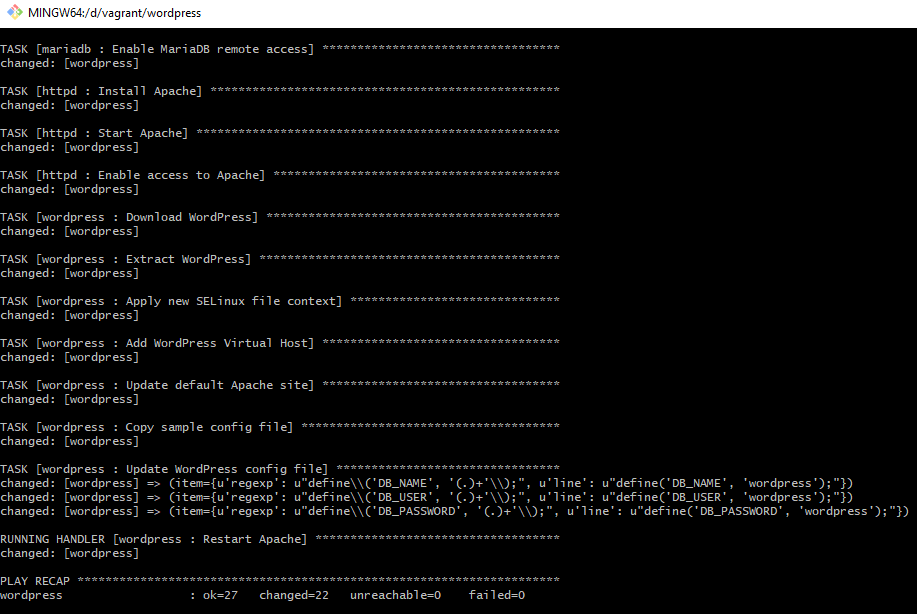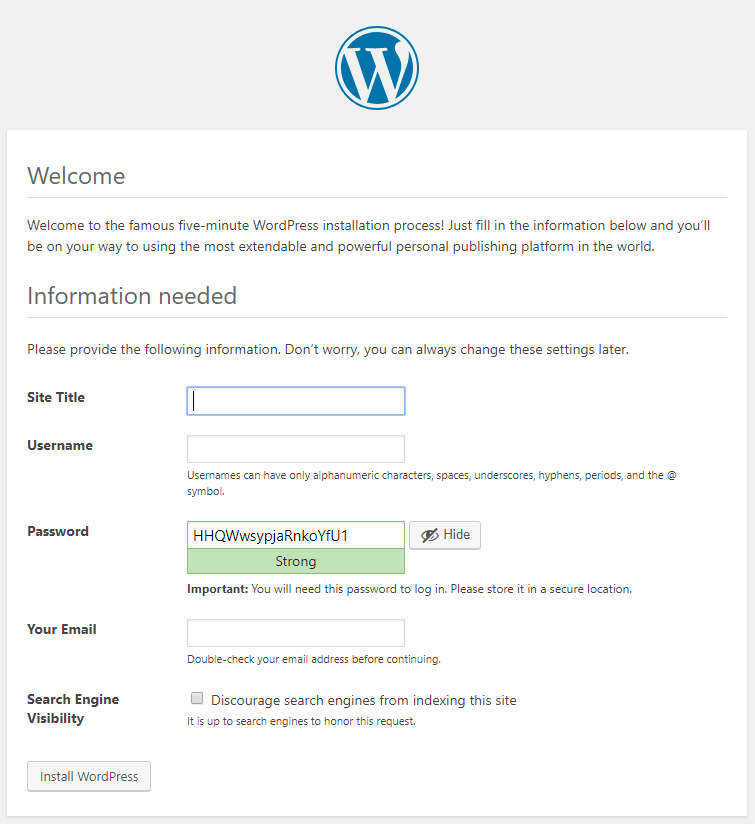I recently went mad and decided to install Windows 10 on my laptop, which had Fedora Linux since I acquired it back in 2015.
I lack of knowledge and experience on Windows, but I decided to build something similiar to my previous demos, which is an automated solution to provision a virtual machine and set it up from the ground up, installing and configuring all needed dependencies to get WordPress up and running.
WordPress is a free and open-source content management system based on PHP and MySQL. Features include a plugin architecture and a template system. It is most associated with blogging but supports other types of web content including more traditional mailing lists and forums, media galleries, and online stores.
Usually, my demos are based on Fedora, Vagrant and Libvirt. This new demo will be a little bit different and the used components here are: Windows 10, Vagrant and Virtualbox
This project is structured as described on the following tree:
$ tree.com .
Folder PATH listing for volume data
Volume serial number is B2B2-7D34
D:\VAGRANT\WORDPRESS
└───provisioning
└───roles
├───common
│ └───tasks
├───httpd
│ └───tasks
├───mariadb
│ └───tasks
└───wordpress
├───files
├───handlers
└───tasksBefore you start with this demo, you need to make sure you have installed Vagrant and Virtualbox. Another used tool is the Apple implementation of mDNS which I often use on linux since it is supported by default. Unfortunatelly this is not the case on windows. Because of that I had to dig into how to automatically resolve local names on windows and I figured out Apple did it already and the tool is called "Bonjour".
You may find the Bonjour SDK for windows here, after installing it, as always on windows, restart your computer before you proceed.
You may choose your preferred git client, I decided to for the official git-scm client. Then just clone this project opening the "git bash" terminal.
$ git clone https://github.com/fabiogoma/wordpress.git
$ cd wordpress
$ vagrant upAfter the Ansible provisioning, you will get a result similar to the one below:
Now check on your browser the WordPress url at: http://wordpress.local (This fancy url is possible due to the usage of Bonjour)
From now on, check any WordPress tutorial and follow the steps on how to use it.

